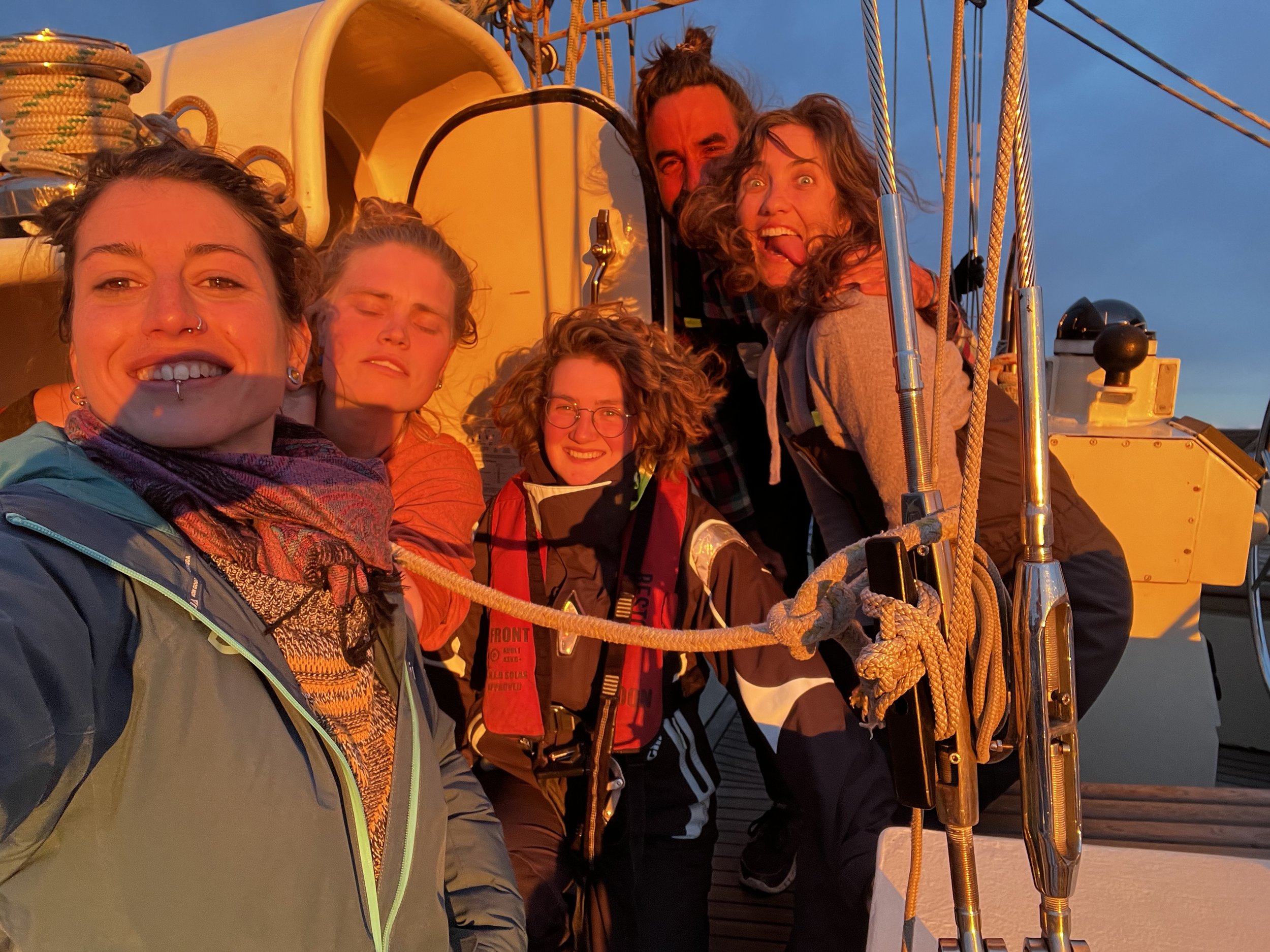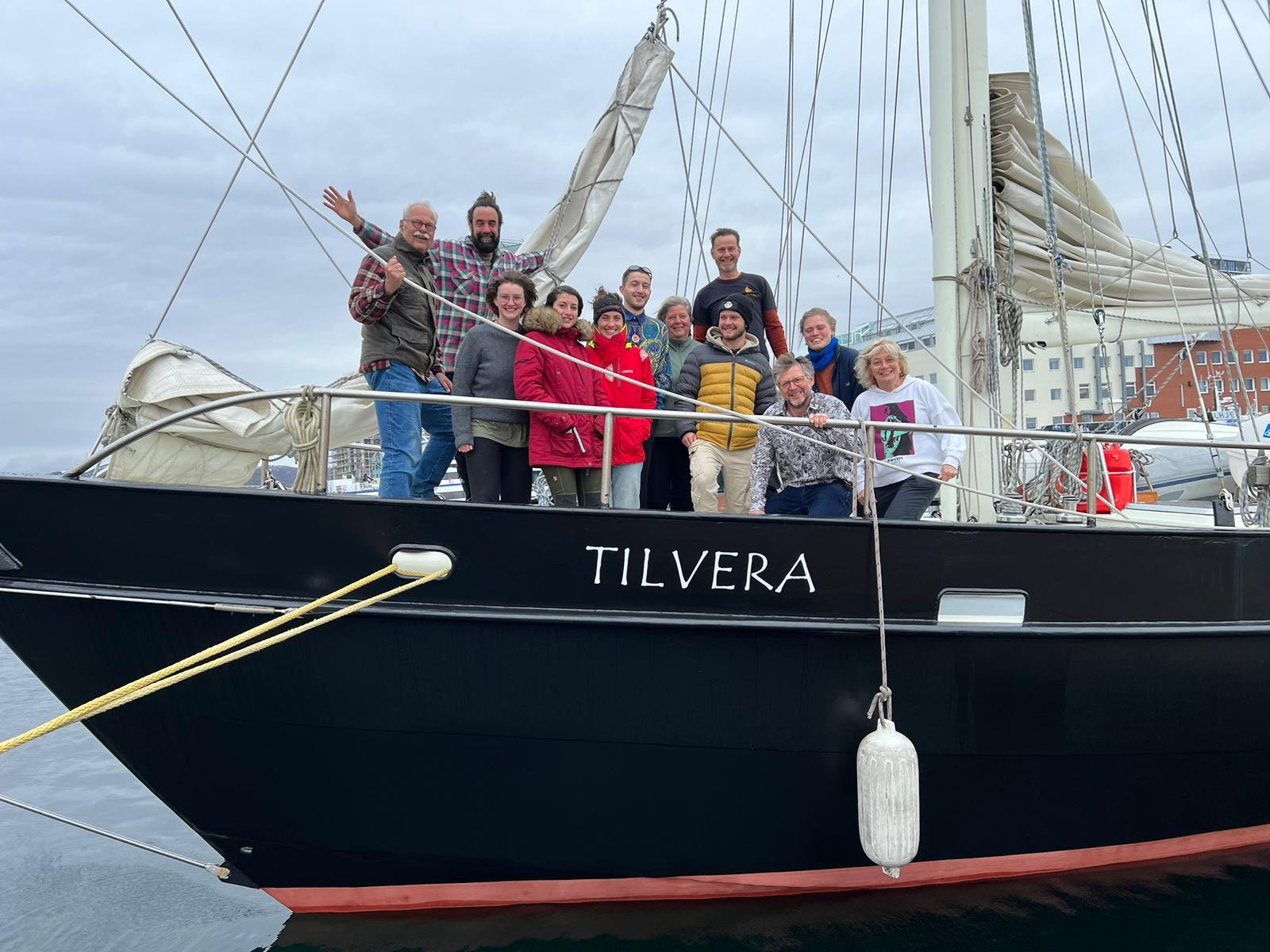Sailing Tilvera to the North
By Safina Center Fellow Belén Garcia Ovide
Sailing in the sunset in the Norwegian fjords. ©Belén Garcia Ovide
In December 2022, just two months before I received the news that I was going to become a PhD student, my partner (Heimir) and I decided to start a crazy project: the Tilvera project.
We have always dreamed about having our own boat, separately and then together when we became a couple. For four years we’ve curiously looked at thousands of boats, feeding our passion for the sailing world.
Last year, I went to the Netherlands to do my final exams to become a first mate. It was there when we found what would become our home; our common adventures and our dream vessel.
In April 2023, I joined Tilvera for the first time with its previous owner and captain Heinz, his wonderful crew, and some students from the sailing school, on a journey of learning and realization, sailing along the Norwegian coast. The mission; to learn everything about my ship, from the technical aspects, the rigging, the maneuvers, and her amazing performance in the Arctic as an expedition vessel.
Sailing Tilvera for the first time. ©Fabio Mendonca
A spontaneous visit to the school before departure!
I spent a few days in the shipyard in Den Helder (the Netherlands) preparing Tilvera for her first sailing season ever with me and Heimir as boat owners. Just one week before departure, I decided to go to my sailing school Enkhuizer Zeevaartschool. Cosmo, the director of the school, advised me to take a rapid radio course that would give me a worldwide radio license (MARCOM-A) that would never expire to operate Tilvera! Three days after intensive studies and tests I was extremely excited to know that I passed the exam and went happily back to the shipyard in Den Helder.
Celebrating the end of the exams at the sailing school. ©Belén Garcia Ovide
My first time sailing Tilvera
On the evening of the 3rd of April, Heimir came back to Iceland and worked at the shipyard in Húsavík while I stayed onboard Tilvera with the rest of the crew. I was a little nervous but mostly excited about experiencing sailing Tilvera for the first time on a real expedition. The morning of the 5th of April, a total of five guests embarked the ship: Chris, Robin, Mariska, Jan, and Jacqueline.
The adventure begins!
For this first trip there were more crew than guests for two reasons: first, because it’s a very challenging trip and more hands are needed. And second, because we want to give students from the Enkhuizer Zeevaartschool an opportunity to learn, get some sea-time, and fill in their task book.
As crew, we had Famke, an enthusiastic sailor from the Netherlands who works on an organic farm, David, a young French man with many talents, Raíssa and Christof (from the inspiring project Piratas do amor), and Rob, a passionate Dutch sailor. We also had Hadassa from the Netherlands, who sailed with Heinz for years and accompanied us as first mate until Svalbard. Hadassa is an amazing woman, with whom we felt a strong connection from the very first moment she stepped aboard. She introduced us to the chores and tasks of the ship, which we all took care of in a rotating manner. These included bread baking, cooking, cleaning, and sewage pumping. Heinz himself (previous owner, builder. and captain of the ship for more than 20 years) joined the trip as a captain and as our mentor for the transition year. Before leaving Den Helder, Heinz gave a safety briefing as well as a general tour of the ship and we organized watches of 4 hours.
Deckhand Raissa (left) prepares for Tilvera departure while captain Heinz and first mate Hadassa (right) explain sailing maneuvers. ©Belén Garcia Ovide
Setting sails to Norway!
Around midday we set sail to Stavanger, Norway. The weather was amazing with South-Easterly winds and rather calm seas the whole way. Yet It was quite a challenging crossing with wind gusts up to 50 knots. About half of the 13 people aboard felt seasick—or at least got very close to it. In total we sailed 426 miles in 60 hours with a top speed of 12,3 knots—a record speed for SV Tilvera. It was fascinating to see Tilvera in the natural elements. When I was at the wheel, I could feel how powerful she really is and how much she loves the wind. She is solid and sails so steady that even in heavy weather you feel totally safe.
Pierre (left) and Hadassa (right) setting sails. ©Fabio Mendonca
Letting go and leaving reality behind you for a while feels just like freedom. On the way, Heinz and Hadassa placed an emphasis on creating opportunities for us to learn and never got tired of sharing their knowledge.
Deckhand David (left) and Christof (right) on watch. ©Belén Garcia Ovide
Norway was mind-blowing!
We arrived in Stavanger at 02:00 am and we all went to bed exhausted. The next morning, we had a short walk around town before sailing on to the nearby Lysefjorden, where we moored at a tiny little pier called Revså Kai.
The next morning, we hiked 18 km to an impressive cliff called Preikestolen. The hike was challenging and stunning at the same time. Cliffs, waterfalls and some areas with the characteristic Norwegian landscapes with lakes and already green trees. On the top of the cliffs, the wind was blowing and the snow made it difficult to reach the peak, but we made it and had a quick snack time together. During the hike, amazing and inspiring conversations started to arise and we could already feel the friendship growing naturally between us.
After returning from the hike, Christof cooked up some mussels while the rest of the crew sailed the ship to a little village called Jørpeland, where we moored for the night
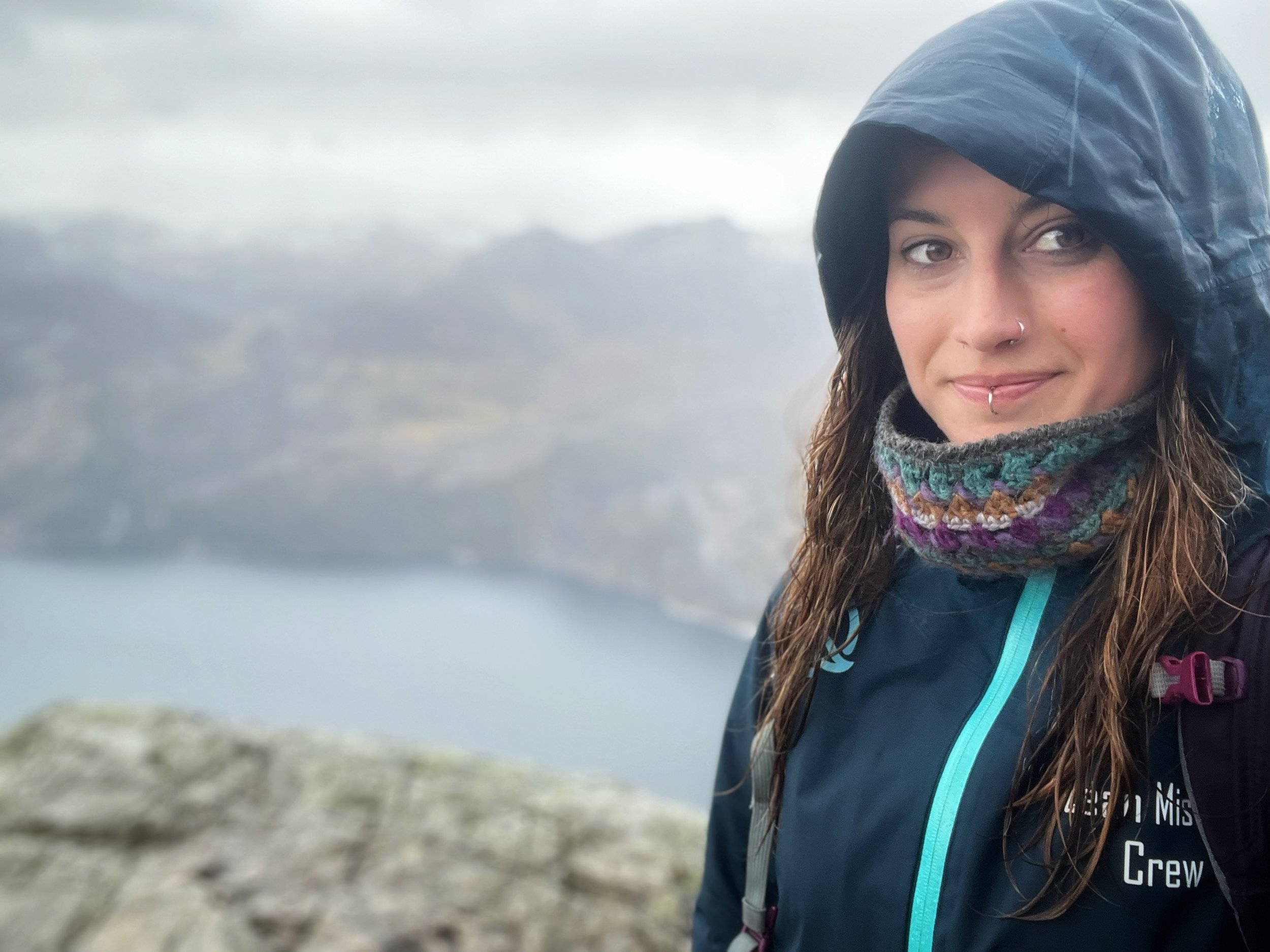
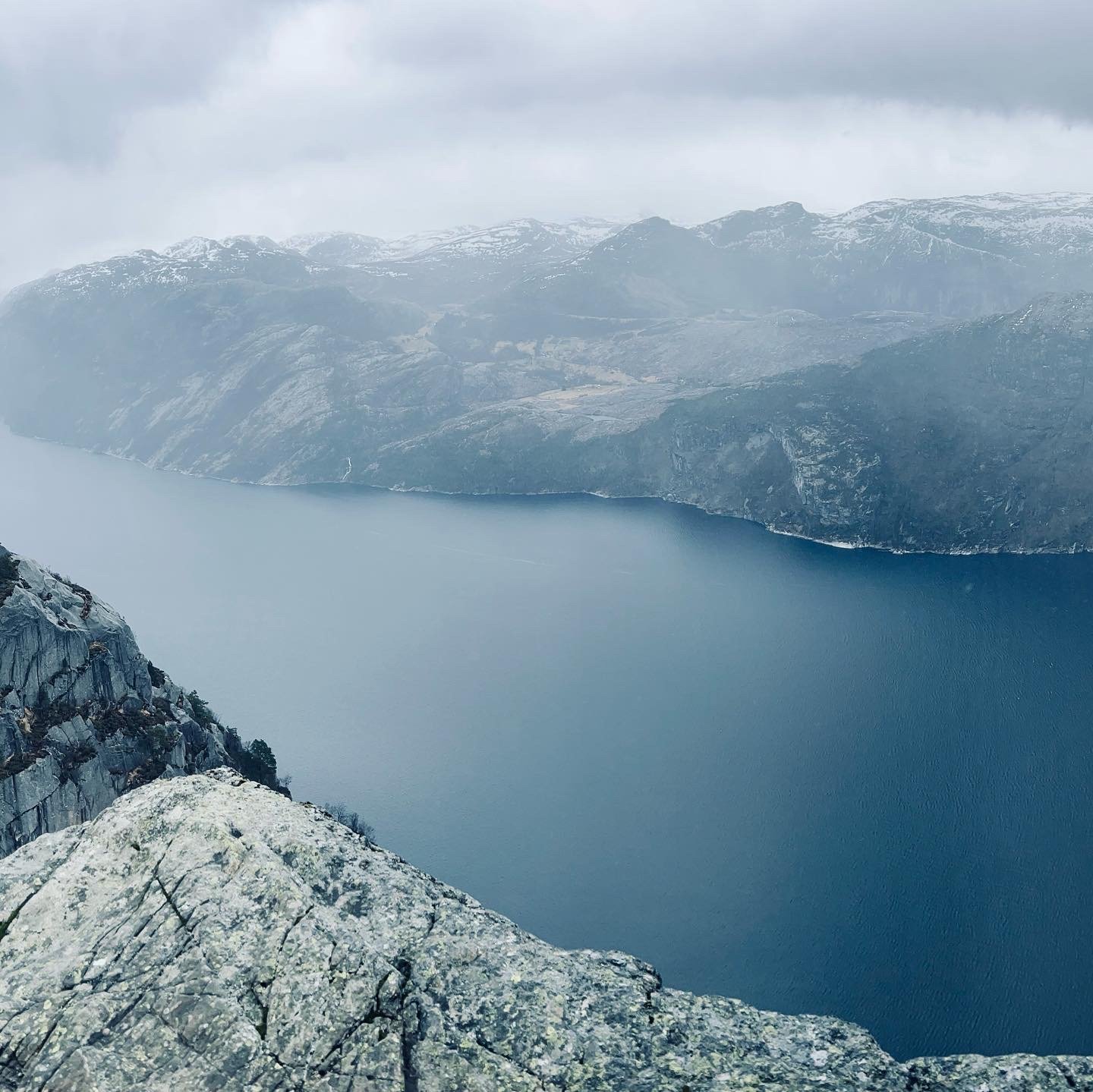
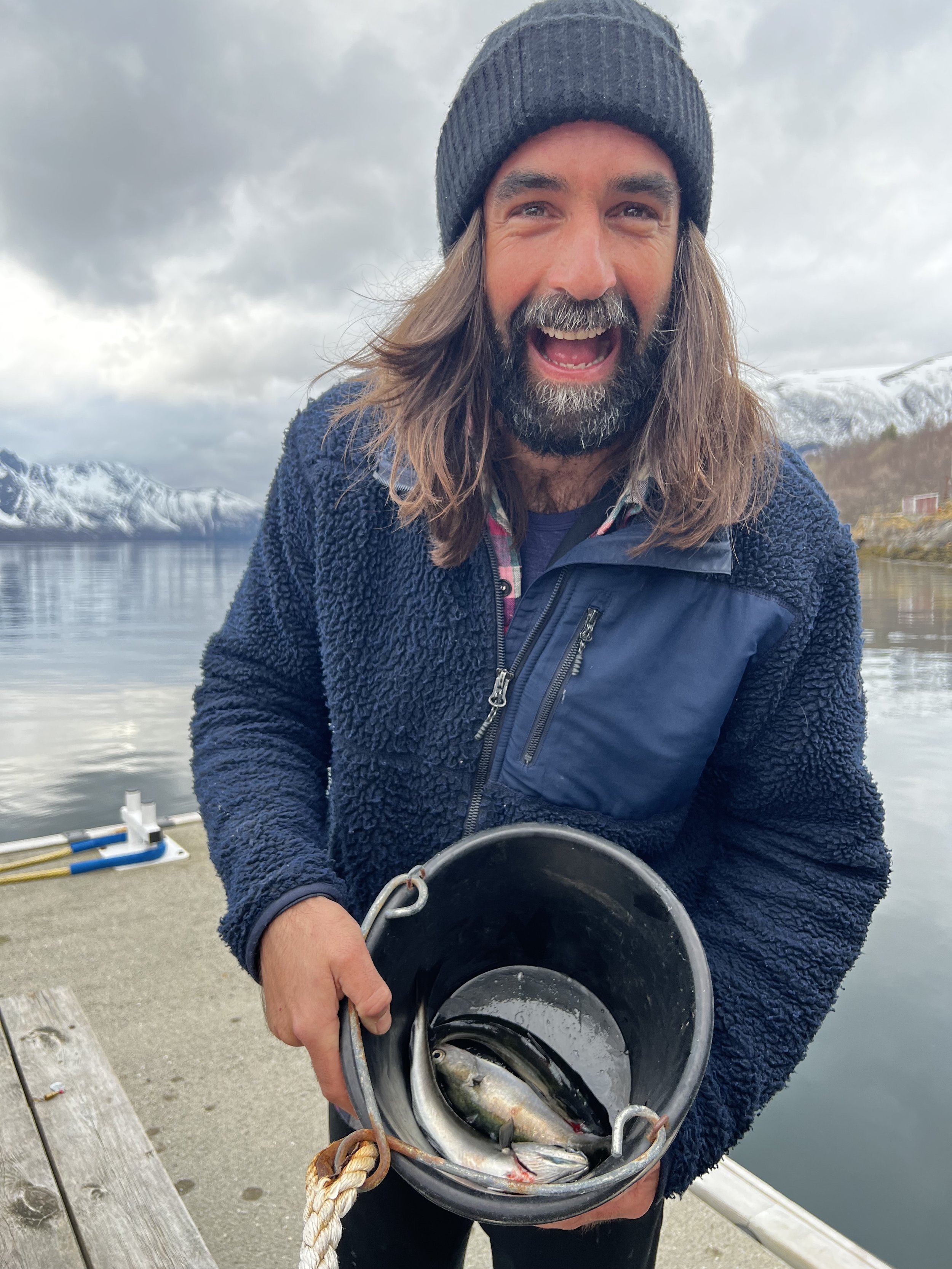
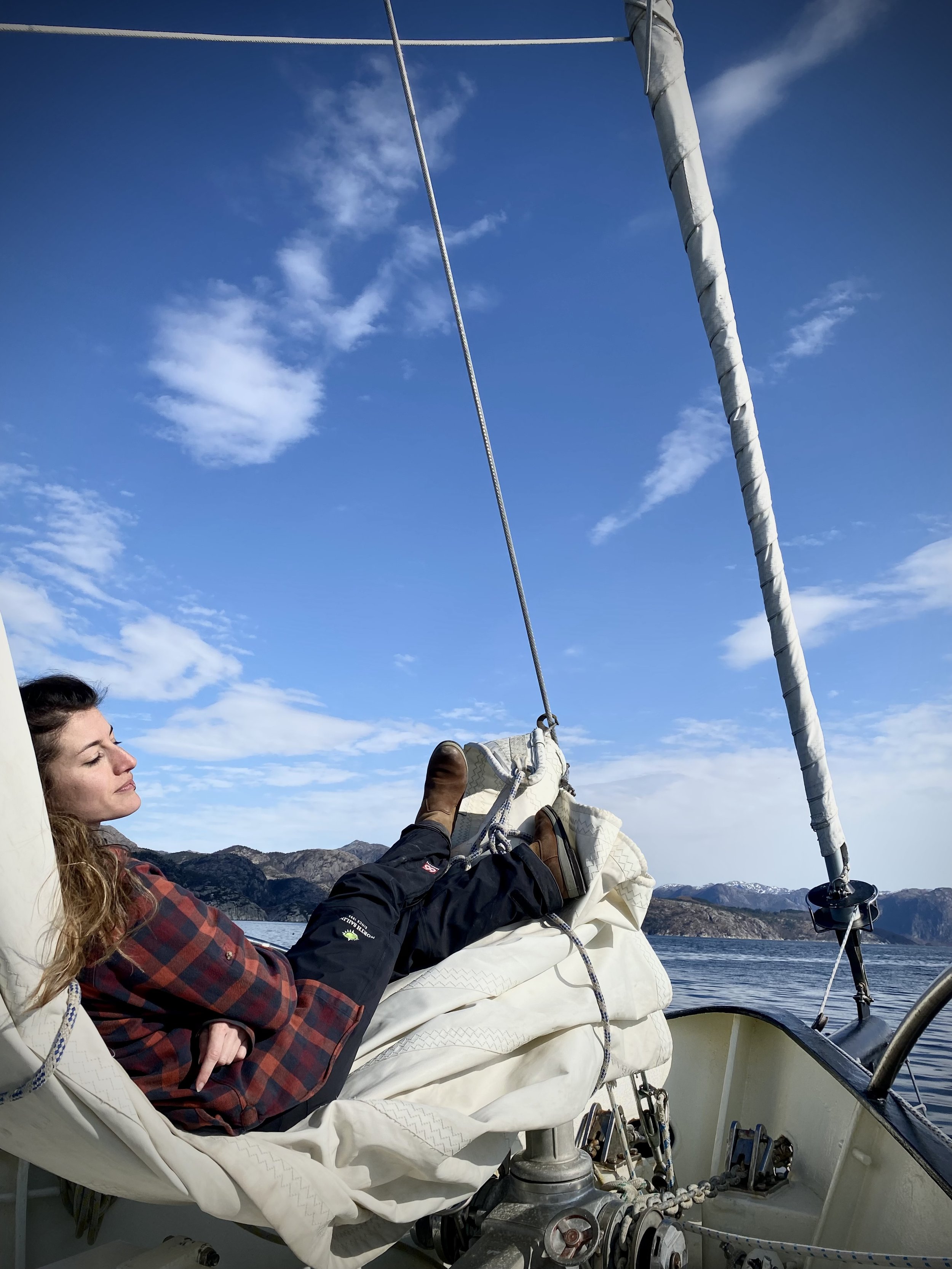
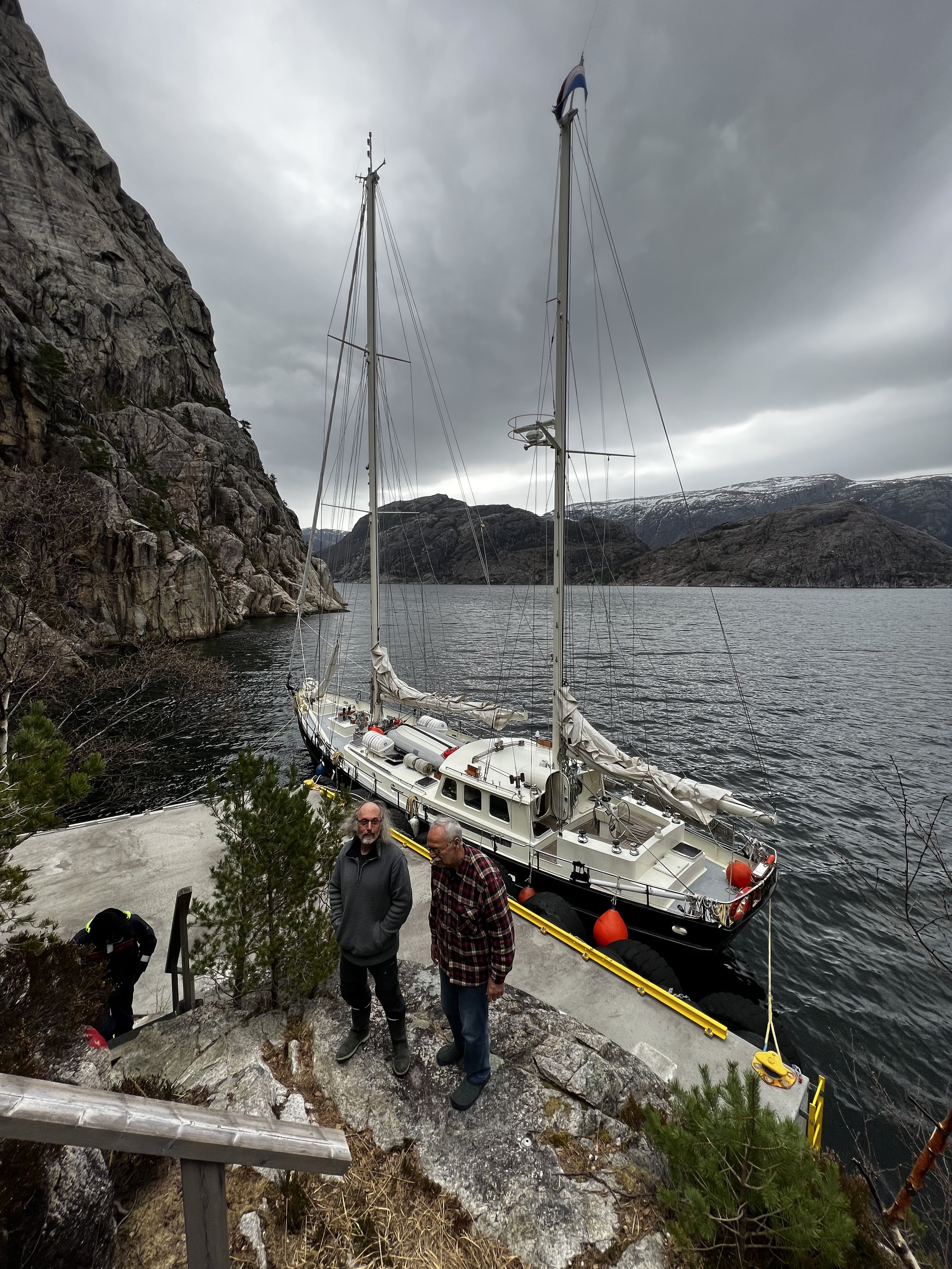
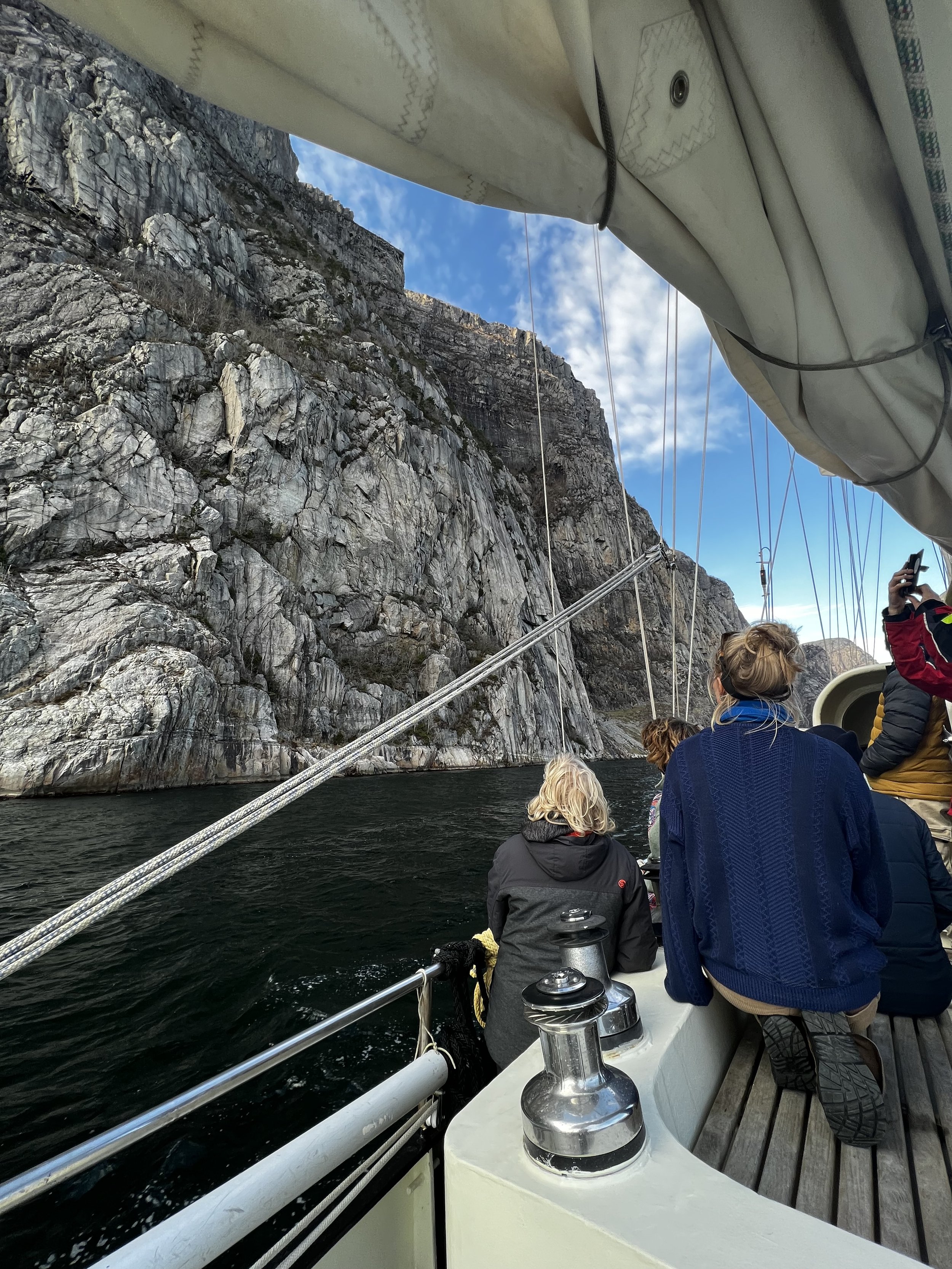
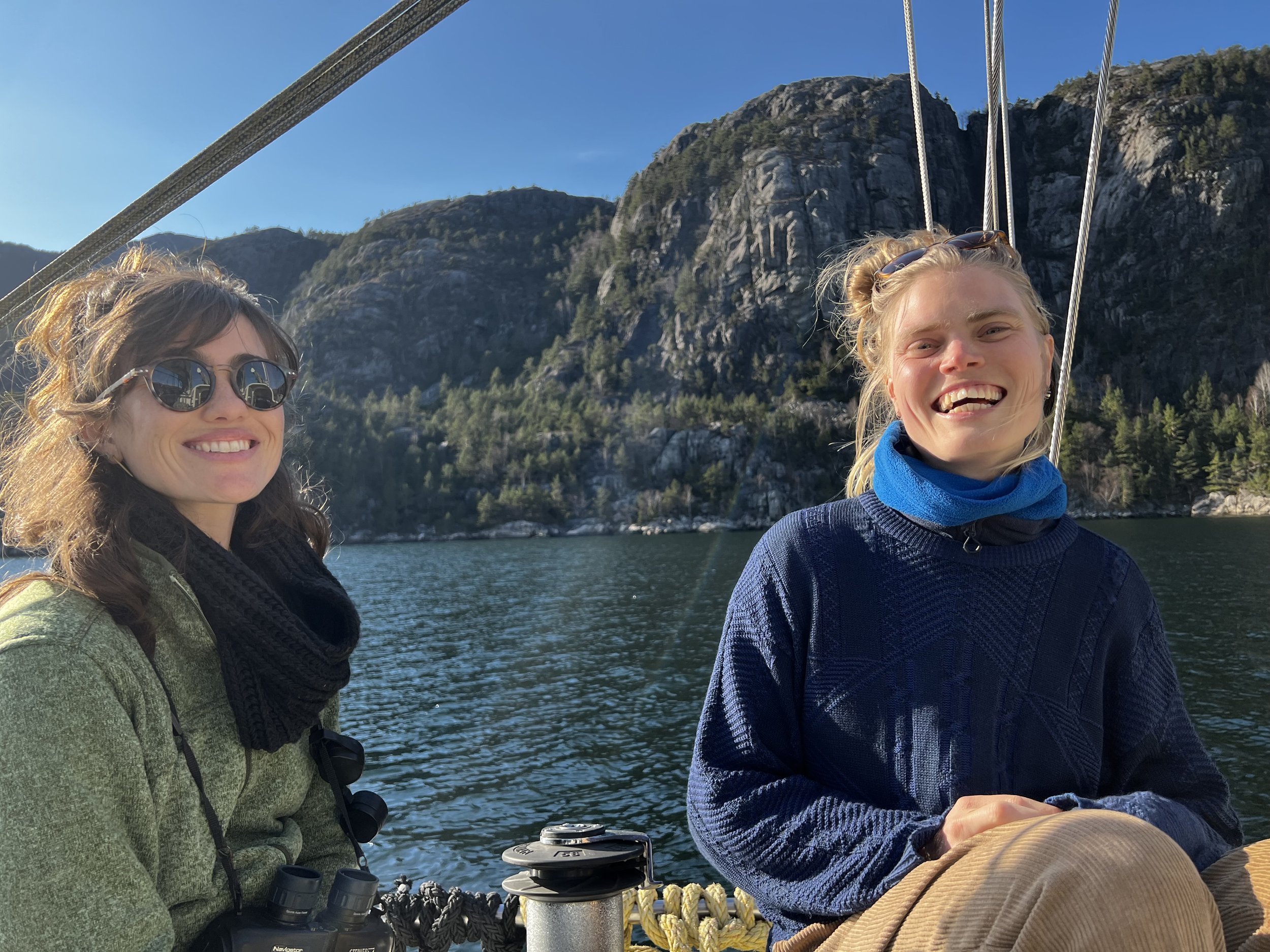
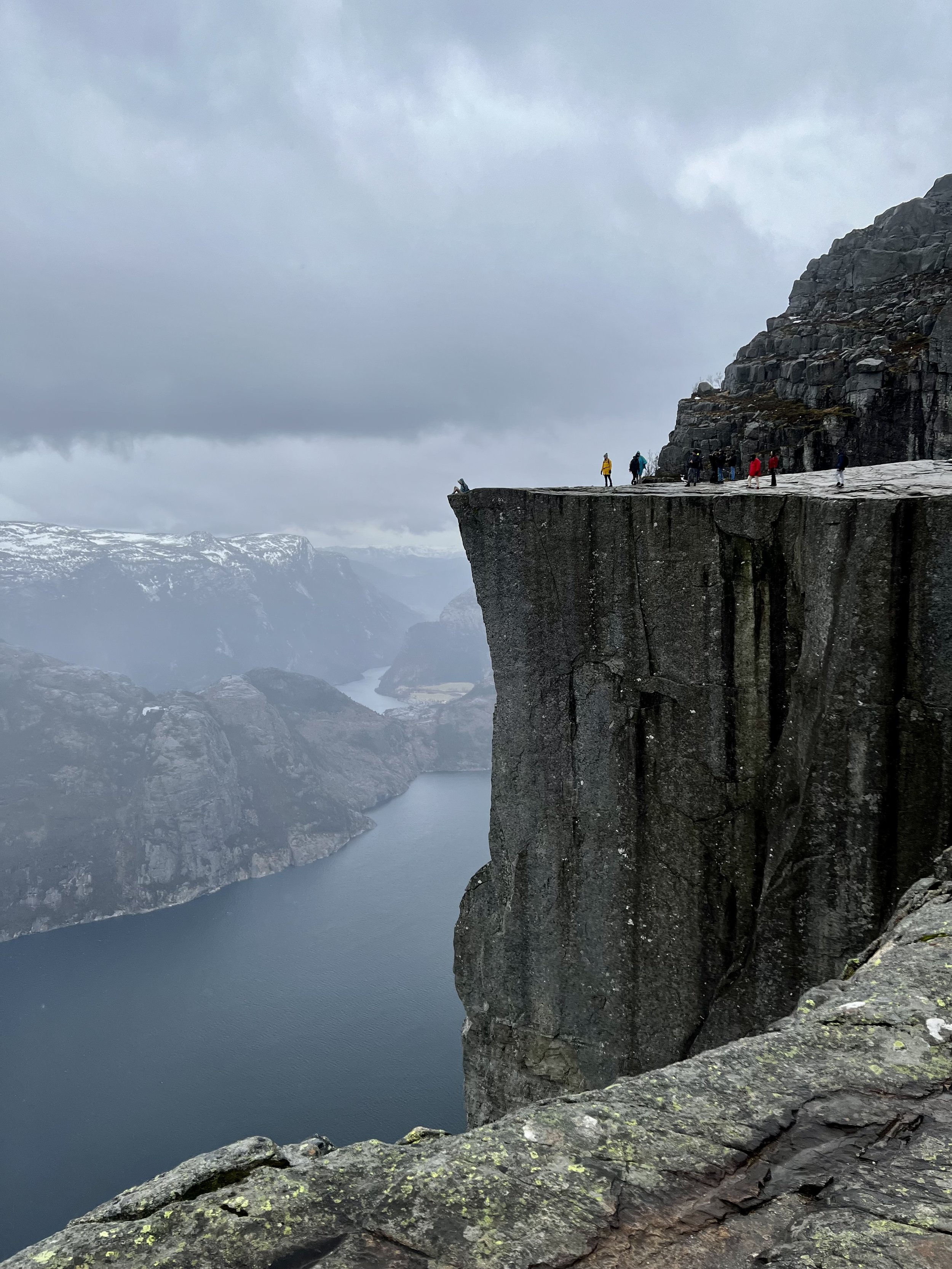
A taste of the Norwegian fjords on our way North
Next morning, we set sail with our destination to Runde, a small island 260 miles up north. We again had amazing South-Easterly winds between 5 and 8 Beaufort, which is quite uncommon for this region known to mainly have Northerly winds.
About half way into the voyage Heinz decided to change course to the city of Bergen to look for spare parts for the heating blower. We arrived there on April 11th at 02:00 am and moored in the middle of the city. The next morning Heinz showed us how to set up the storm jib and while he was busy fixing the heating system we took a walk around Bergen, which is known as “Europe’s rainiest city”. We checked out the old town and explored the fish market, where we bought some locally smoked salmon, cod and herring, which we enjoyed together with the crew during a late lunch in the pilothouse. In the evening our fellow crew member Rob surprised us with his Pizzaiolo skills and hosted another great dinner.
Captain Heinz explains the next sailing route to crew and passengers (left), Setting the storm sails in Bergen (right). ©Belén Garcia Ovide
From Bergen we sailed 162 miles to the beautiful island of Runde. The 6 km² small island is famous for its enormous number of birds. It is said that during the summer more than 500,000 seabirds inhabit the island. Since we arrived a bit too early in the season, we did not see many birds. However, the stunning view from the top of the cliffs made the hike a memorable experience after all. Back to the pier, Famke—who had also studied at the Enkhuizer Zeevartschool—Raissa and Christof took a dip in the ice-cold water.
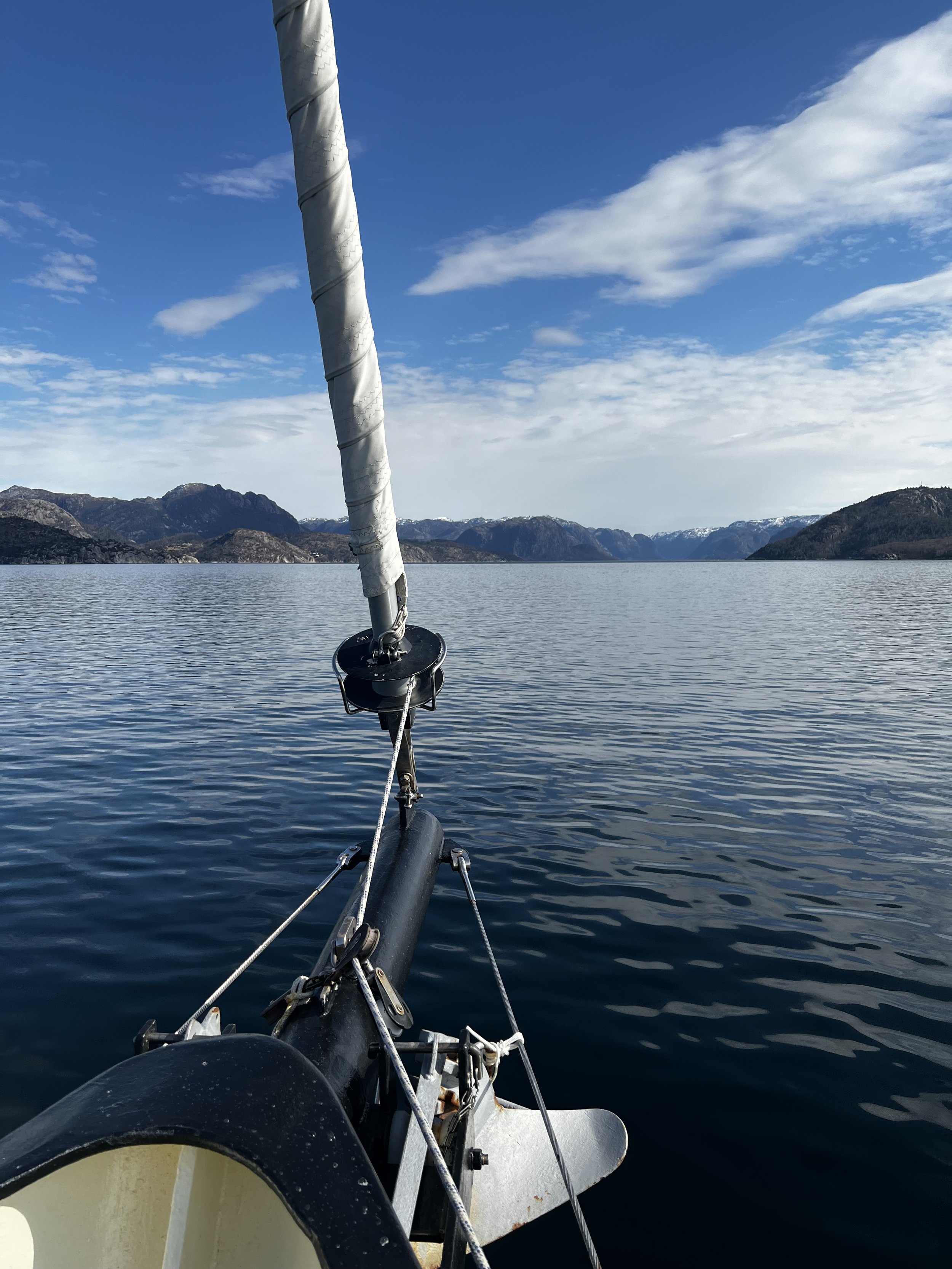
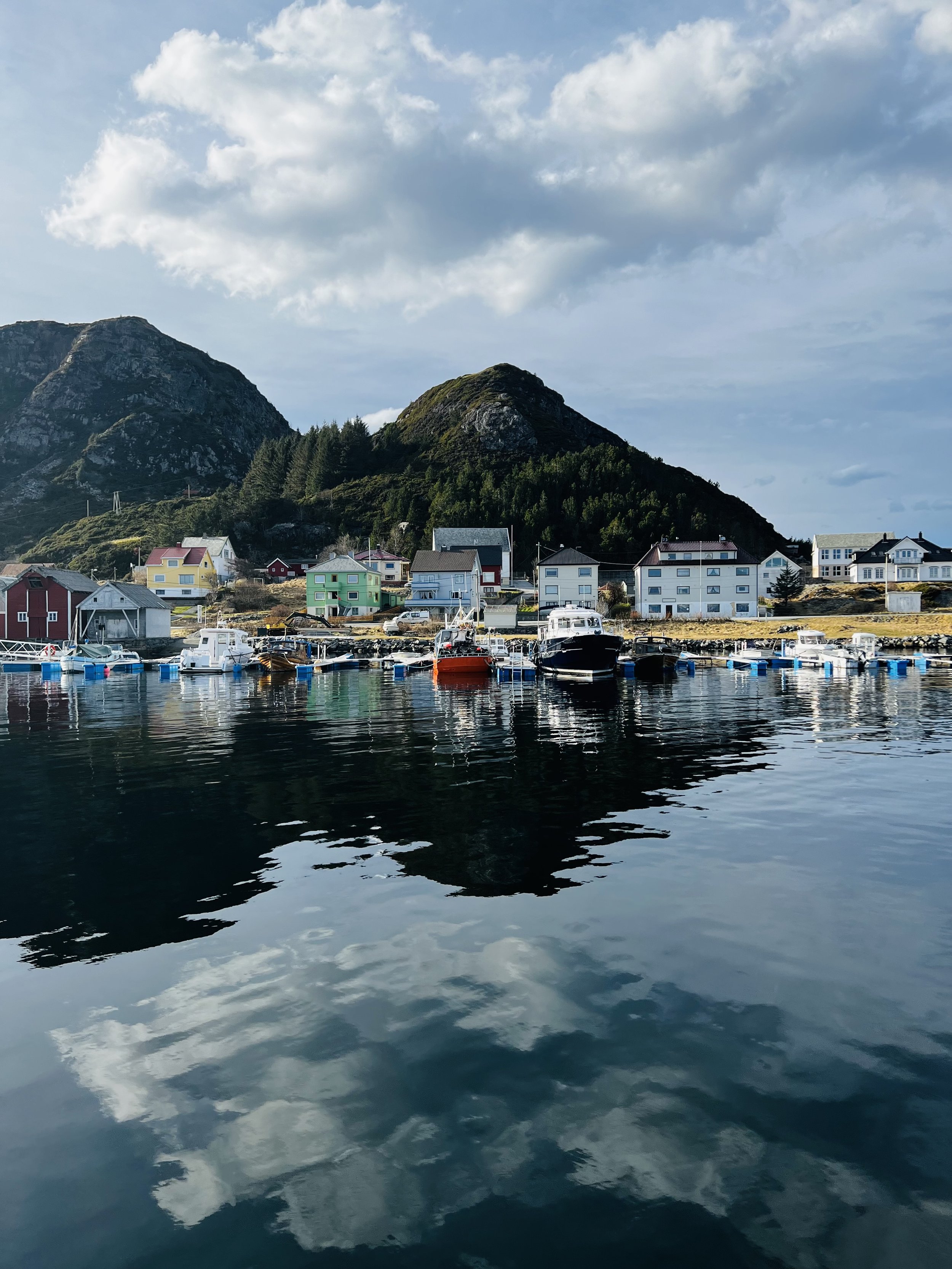
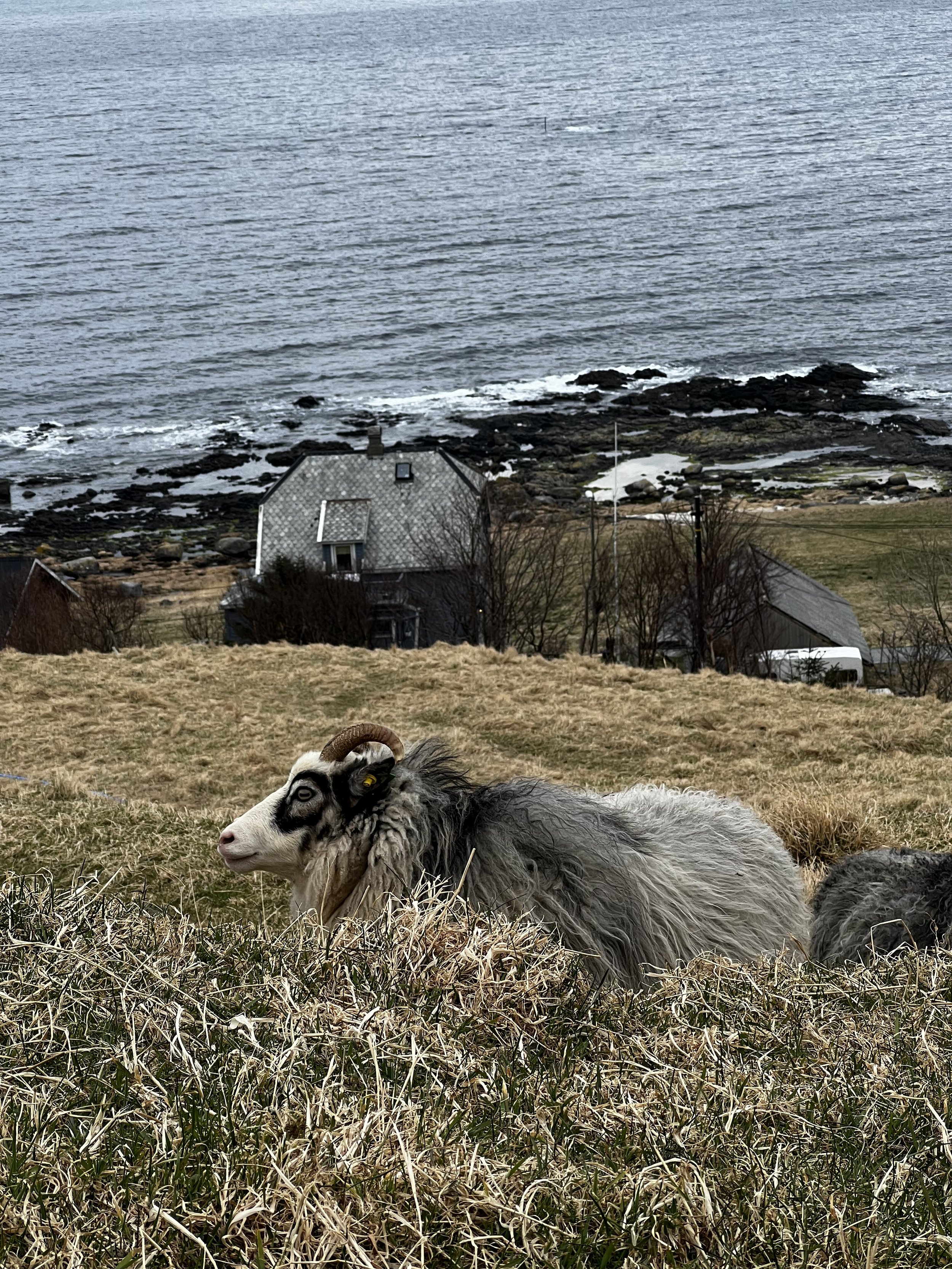
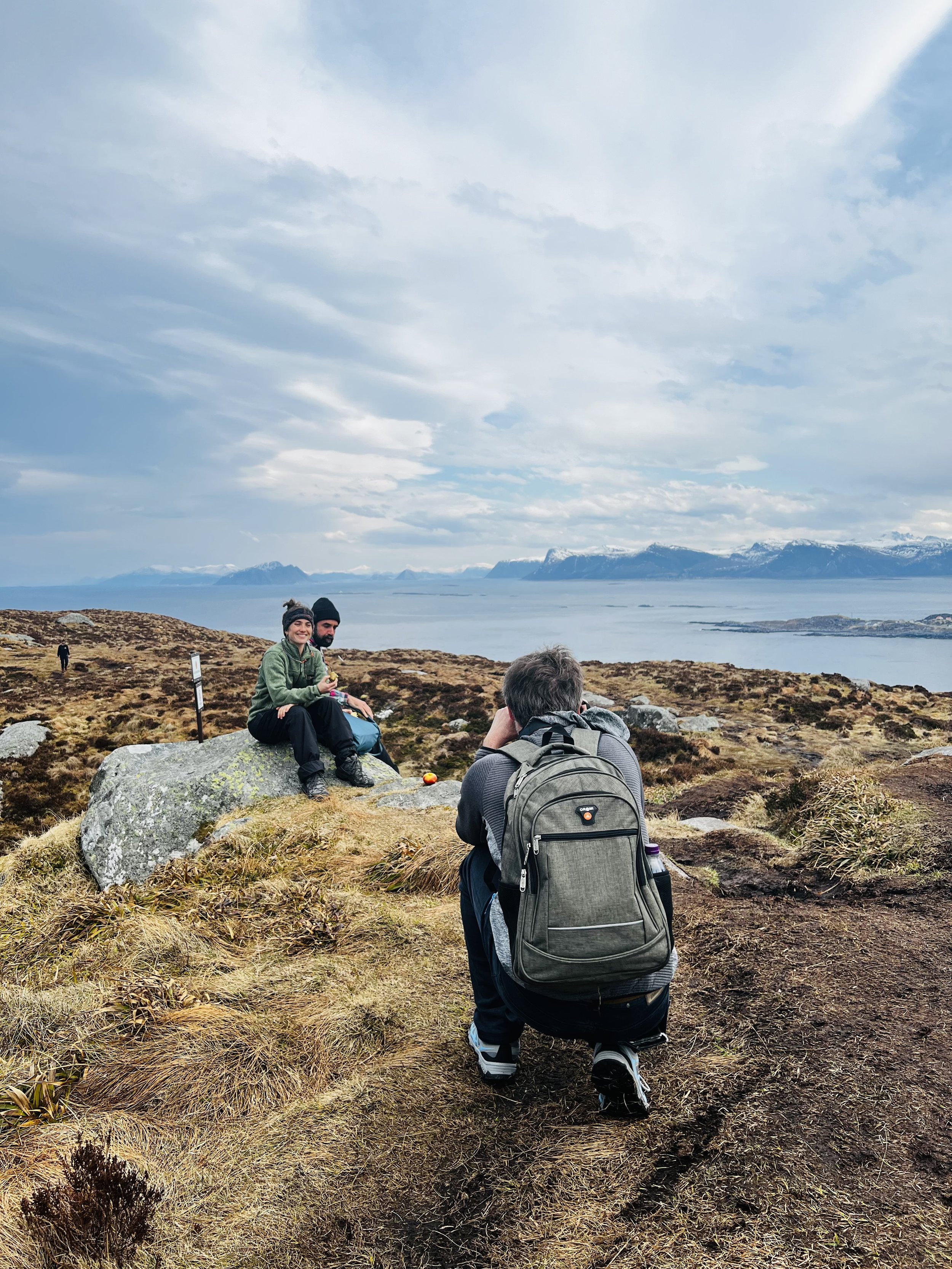
Crossing the Arctic Circle!
We continued our journey up north following a protected route through the impressive fjord and island systems of Norway’s Atlantic coast. At 09:00 am on the 16th of April we crossed the Arctic Circle, which marks the northernmost latitude at which, on the Winter solstice—the shortest day of the year in the northern hemisphere—the Sun will not rise all day, and on the Summer solstice—the longest day of the year in the northern hemisphere—the Sun will not set. The further north we progress from now on, the longer the days will get. We celebrated our achievement by singing to the ocean and hugging each other!
Celebrating crossing the Arctic Circle ©Belén Garcia Ovide
Reading the signs of the water we find our soul animals
Holandsfjorden is best known for the Svartisen Glacier, the second largest Glacier in Norway covering 375 km². After a good rest from the three-day crossing, we went for a long hike exploring the beauty of this majestic ancient body of ice. We really enjoyed the raw energy of this remote, cold environment and were slowly falling in love with the North. I have been travelling quite a lot and have seen other remote areas in the world. Yet , this was one of the most spectacular hikes I ever did. Not only because of the views, but it was very moving to witness and realize the power of water. Water in all forms, water in glaciers melting into ice-cold water reaching our seas and creating life. Life is water and water is life.
Since a year ago when we started dreaming about our Tilvera project, somehow, we have always had the presence of a polar bear in our minds and hearts (which could be another whole chapter to explain why). Finally, when we reached the top of the glacier, we looked up to the 30 m high steep glacier and found a polar bear-shaped chunk of ice shining through the sun rays.
We talked about how important the glaciers were to the climate and how throughout the years Heinz can see it retreating… Glaciers disappear as do indigenous communities and cultures as society and globalization evolves… “Our past melting into the present through water”
We were alone in such a majestic place where the color of the mountains and the reflections of the water on such a calm day made me feel very emotional and happy. I love reflections!
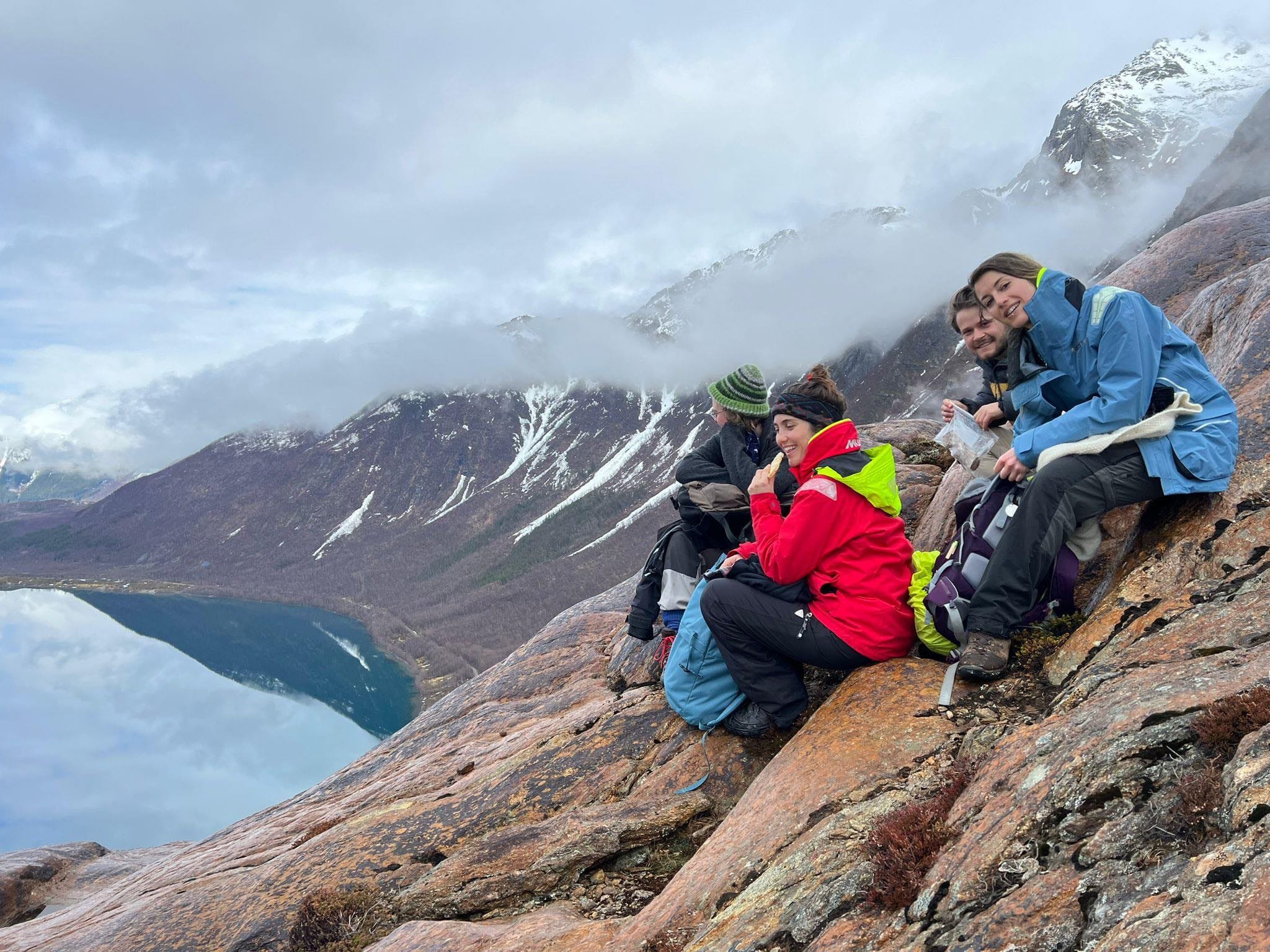

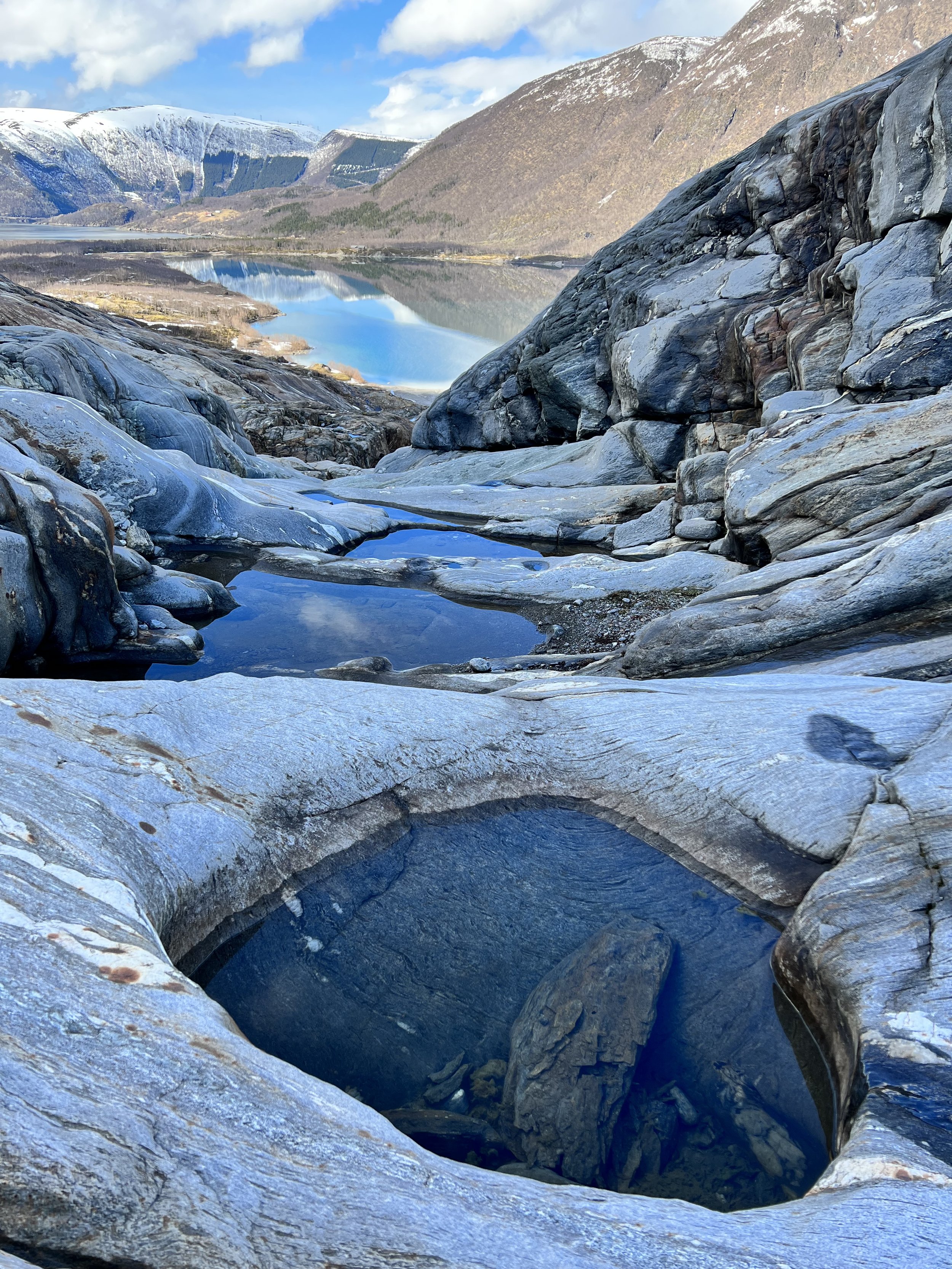
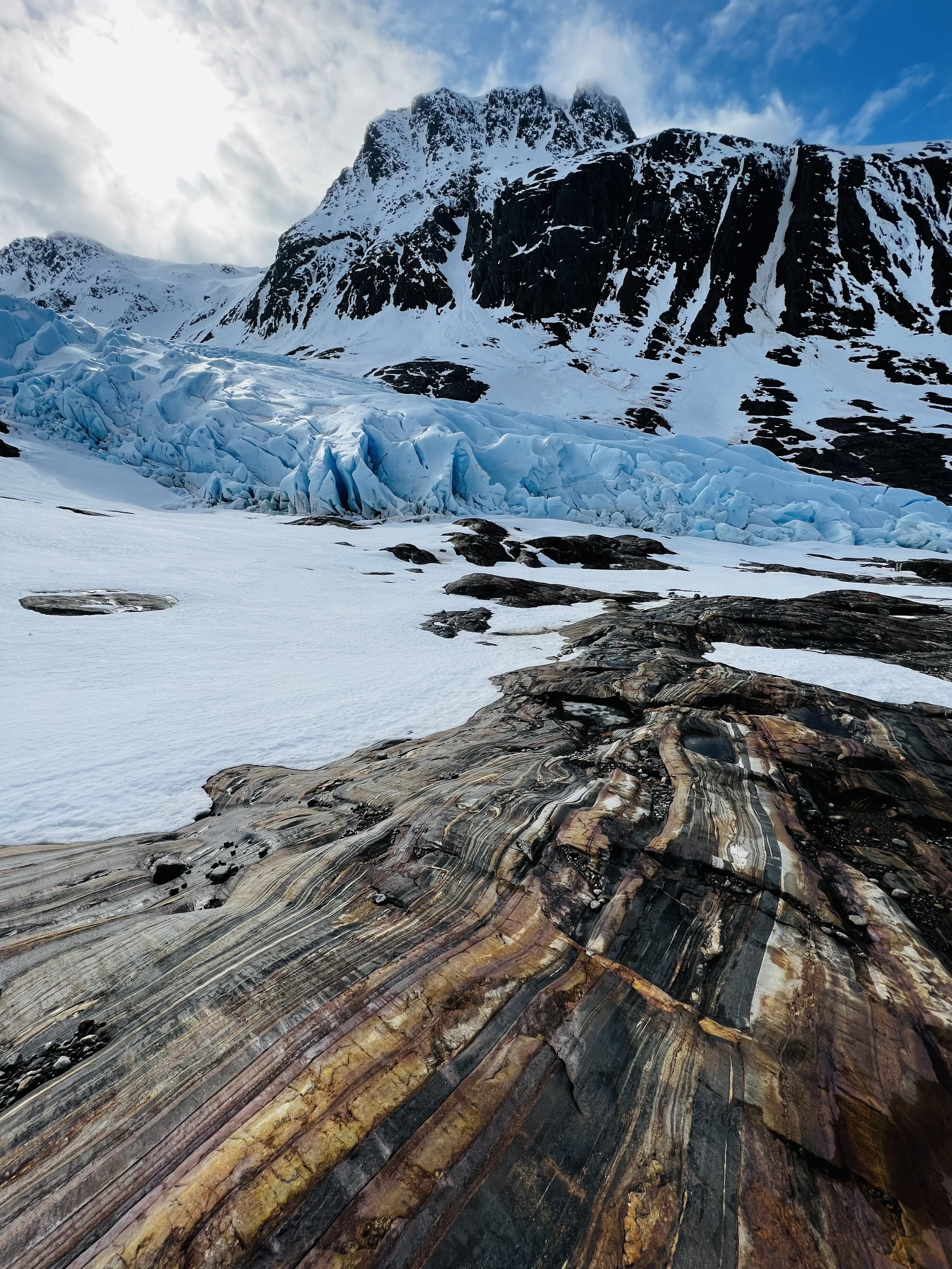


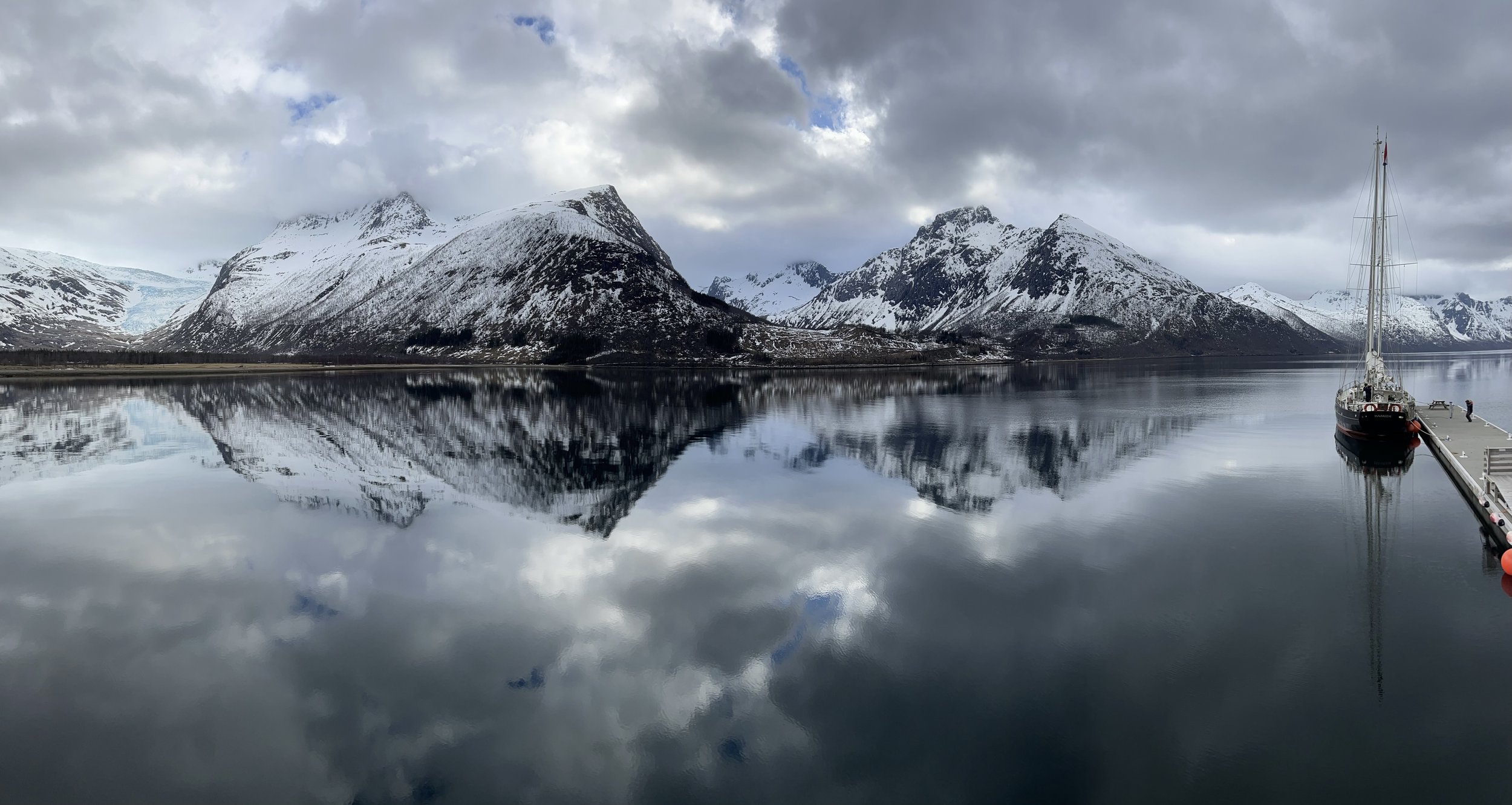
Back on the pier I rigged up the fishing gear and, and together with other crew members and guests, was amply rewarded. We caught codfish, coalfish and also found some more mussels, which we all—in a great community cooking event—turned into a traditional French Bouillabaisse.
The last leg to Bodø, reflecting on the highs and the lows and the treasures we take back home…
The next day we woke up early again and sailed the last 60 miles to Bodø, which was the final destination of the first leg of our trip up north with SV Tilvera. Upon arrival, Heinz and Raissa hosted a very emotional sharing round, giving space for everybody aboard to reflect upon and share their highlights, lowlights, and the treasures they will take home with them. I could not hide my tears to see how well everything was flowing and to realize that I was part of such a beautiful project. I felt humble.
Group picture at the dock in Bodo ©Heinz Wütschke.
The journey continues sailing again for a 12-day trip to Lofoten, Tromsø, Bear Island, and finally Svalbard.
Planning the next to Svalbard. ©Belén Garcia Ovide
We are all up for reaching Svalbard, the so called the end of the world, the land of ice and exploration.
This is just the beginning of a journey of transformation. My head is spinning around with ideas, thoughts and excitement. But there is one thought that’s especially overwhelming:
“The ocean, our most ancient home, offers us a profound opportunity for self-discovery and reconnection.”
By living on a sailing ship, we expose ourselves to constant movement, little privacy, limited comfort and isolation, which teaches us a set of life skills that no other school back in land can offer. This is so precious and far from what any civilization can offer.
It is an opportunity to better understand ourselves, enhance our relationships with others, and rethink our contributions to the future of our planet.








